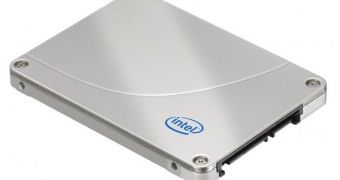There are multiple reasons why solid-state drives haven't been adopted by data center applications yet, and Intel hopes to find solutions to all of them over the course of the next year.
Solid-state drives used to have the price as the largest deterrent when competing with hard drives for the interest of prospective buyers.
This still holds true, but the issue has never been as great on the business/enterprise/data center front as it has been on the consumer market.
The real problem in that field, other than the capacity disadvantage, was the short lifespan of solid-state drives compared to magnetic platter spinners.
All this, along with the familiarity of HDDs, have restricted the SSD data center share to around 4%.
Even that 4% was barely achieved, and the invention of SSD caching helped a lot, despite being a somewhat recent development.
For those who need to be brought up to speed, SSD caching is a technology that takes an SSD and an HDD and has them work together. The two distinct storage devices are viewed as a single partition by the system, allowing for a combination of the speed of the SSD with the raw capacity of HDDs.
By now, it is clear that the capacity difference will resolve itself eventually, but that still leaves the short lifespan.
Thus, Intel intends to implement the high endurance technology (HET) in all of its drives from now on, or most of them, in anticipation of the time when data centers take the place of ultrabooks as the main battlefield of NAND Flash-based 2.5-inch/mSATA drives.
Intel HET works by sacrificing long-term data retention in favor of write cycles. The SSD 710 Series line already utilizes it and, though its data center presence is sparse, it does have other supporters (AVADirect custom-built workstations, notebooks and, though not directly related to the matter at hand, gaming desktops).

 14 DAY TRIAL //
14 DAY TRIAL //